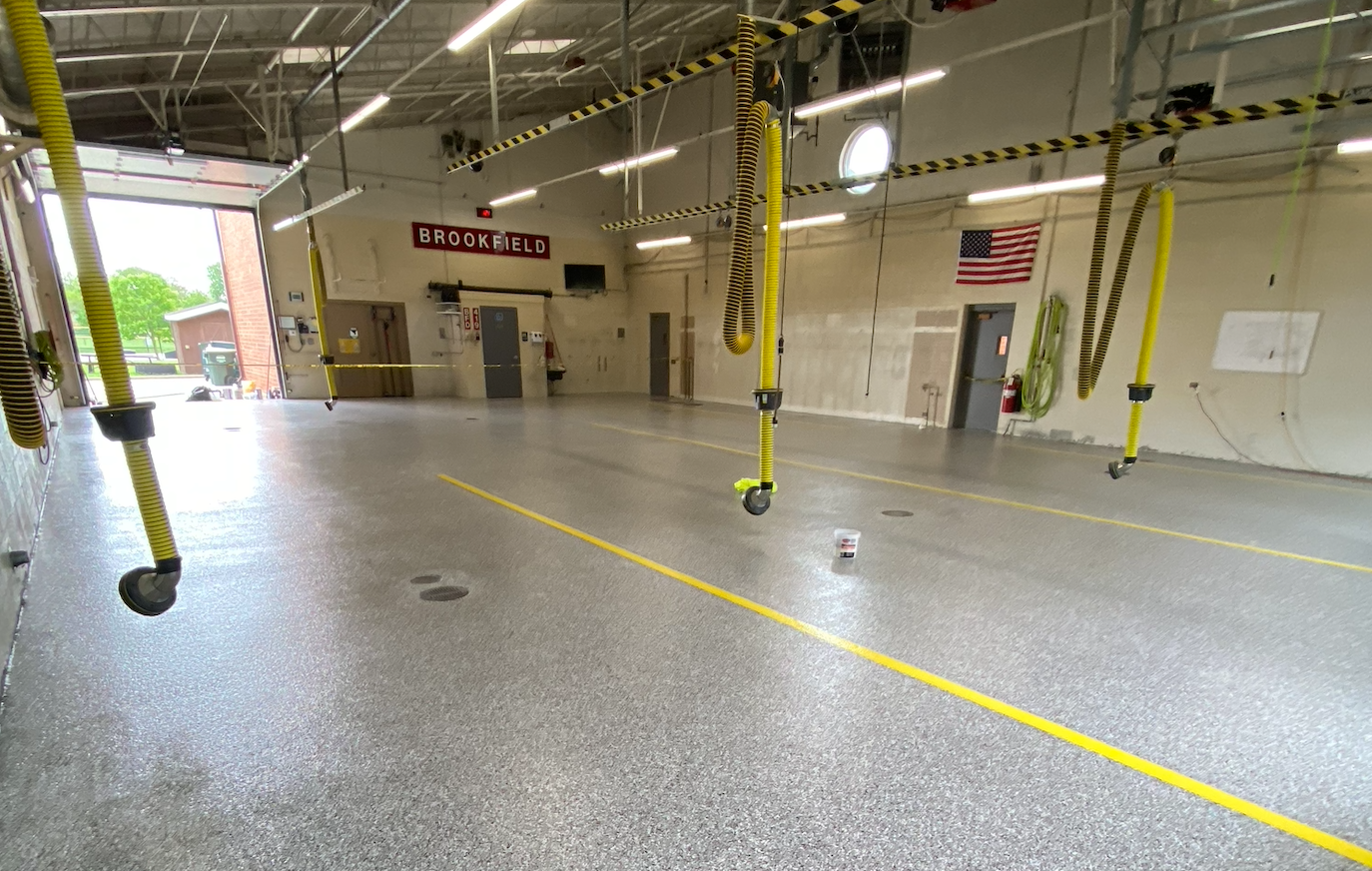

August 13th, 2025
3 min read
By Tom Dassie

In a firehouse, every second counts. From the moment an alarm sounds, firefighters must move quickly and precisely to respond to emergencies. But while speed is critical, safety and organization are just as important. One often-overlooked way to support this fast-paced environment? Strategic, color-coded line striping.
At CustomCrete, we’ve worked with fire stations across the Midwest to design line striping systems that actively support faster response times and safer workflows. With experience in high-pressure environments, we understand how layout, visibility, and durability come together to make every second count.
In this blog, we’ll explore how intentional line striping in fire stations improves operational flow, reduces hazards, and enhances response time—turning simple visual cues into powerful tools for emergency preparedness.
Firehouses are high-functioning facilities with complex traffic patterns, heavy equipment, and human movement—all happening under high-pressure conditions. Without clear boundaries and visual direction, things can quickly become chaotic or dangerous.
Line striping plays a key role in:
In fire stations, these markings can be the difference between a smooth rollout and an unnecessary delay.
Before diving into ideas, it’s helpful to understand the broader advantages of adding thoughtful line striping to your firehouse layout:
Clearly marked pathways to apparatus bays, exit doors, and loading areas ensure firefighters can move directly and efficiently toward their vehicles—without obstacles or hesitation.
Color-coded lines can designate zones for gear, foot traffic, and equipment storage, reducing the risk of trips, collisions, or blocked access during an emergency.
Visual cues help keep everything in its place. Whether it’s a marked SCBA fill station or a turnout gear zone, clear boundaries encourage order and reduce clutter.
In loud environments or when communication is limited, color-coded striping acts as a silent but effective guide.
When done well, line striping serves more than just aesthetic or organizational purposes—it becomes part of your response protocol. Here are a few ways firehouses can benefit:

Standardizing your color scheme can also help firefighters recognize zones instantly:
In an environment with vehicle traffic, weather exposure (for drive-through bays), and frequent cleaning, it’s essential to use line striping materials that last. At CustomCrete, we recommend:
Professional installation and surface preparation are also key—poor adhesion or misaligned stripes can quickly lead to confusion or early wear.
CustomCrete has partnered with fire stations and public safety departments across the Midwest to create smarter, safer facilities. Our team understands how operational flow, safety codes, and visual organization come together in these environments.
We don’t just apply paint—we help plan and install line striping systems that actively support your station’s mission, whether that means prepping for fast exits, enhancing gear access, or protecting personnel.
Line striping might seem like a small detail—but in a firehouse, it’s a powerful tool. By guiding movement, improving safety, and enhancing equipment readiness, well-designed striping systems help firefighters focus on what matters most: responding quickly and effectively when it counts.
If you're considering a line striping upgrade in your station, take the time to evaluate how your layout supports your workflow—and where a few lines might make all the difference.
Want help planning or upgrading your line striping? Read our next article, “Creating Safer Walkways with Color-Coded Line Striping in Your Facility”, or request a quote from CustomCrete today, and let’s build a safer, more efficient firehouse together.
